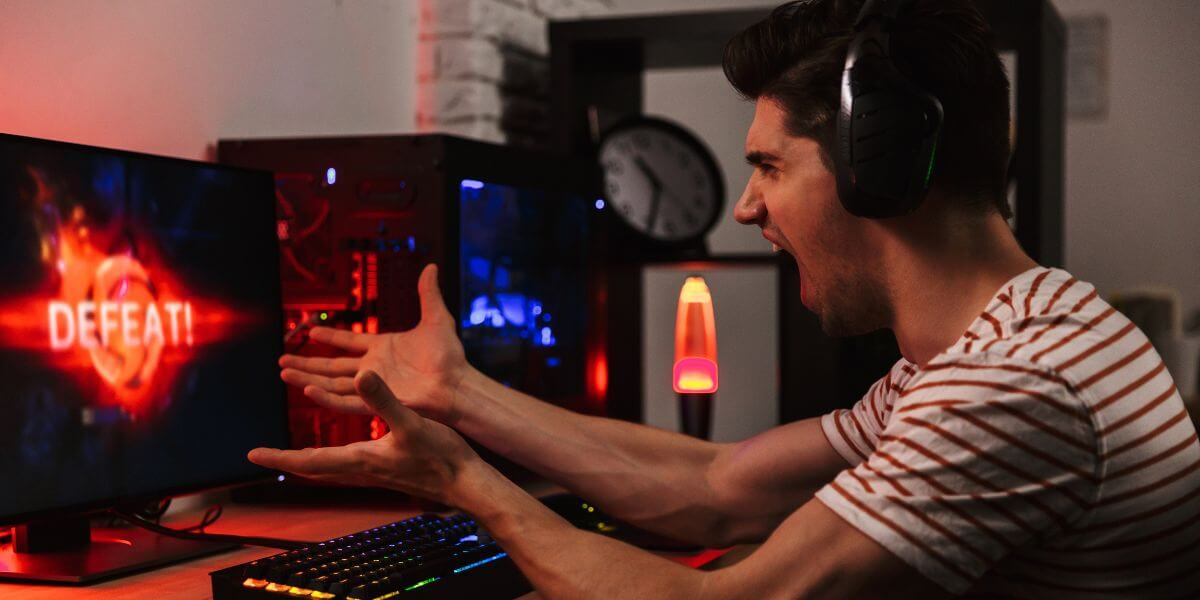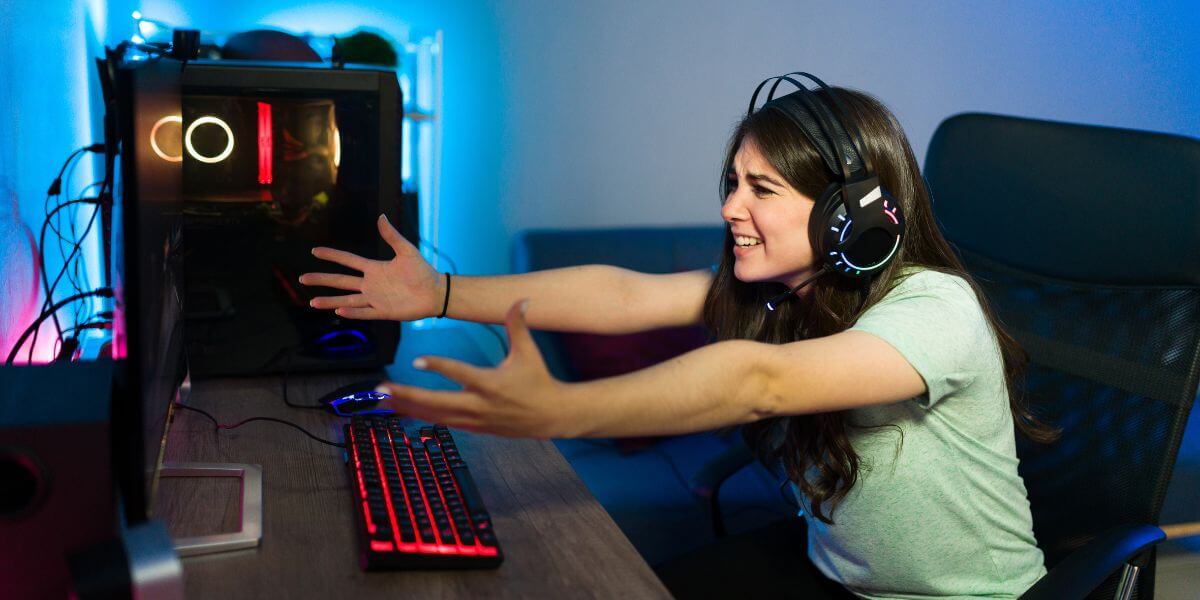Lower your internet bill
61% of people overpay for their internet.
Are you one of them?
Unlock exclusive offers in your area!
Call now
[tel]Enter zip code
1 Star is Poor & 5 Stars is Excellent.
* Required
Written by Sam Watanuki - Pub. Jul 31, 2025 / Updated Aug 18, 2025
Table of Contents
Are you happy with your Internet service?
About the author
Every millisecond counts when you’re locked in a heated battle royale or clutching a crucial round in a competitive shooter. While gamers obsess over frame rates and hardware specs, many overlook the silent killer of gaming performance: poor internet connectivity. The harsh reality is that inadequate internet speed for gaming doesn’t just cause occasional stutters. It can measurably destroy your competitive edge and tank your statistics across every game you play.
Recent studies reveal that 78% of gamers reported lag issues related to high ping during online matches… and that impact goes far beyond mere frustration. When your connection struggles, your gaming stats suffer in ways that compound over time, affecting everything from kill-death ratios to ranking progression.
Most gamers understand that lag is annoying, but few realize how precisely it sabotages their performance. Network latency — measured as ping in milliseconds — creates a delay between your actions and their execution in-game. In fast-paced online multiplayer games such as first-person shooters (Call of Duty, Fortnite), racing games, or MOBAs (League of Legends), even a few milliseconds of delay can be the difference between victory and defeat.
The cruel irony is that while you’re perfecting your aim and strategizing your gameplay, poor internet is silently undermining every improvement you make. In competitive gaming and esports, where precision and lightning-fast decisions are crucial, a low ping is important for gaining and maintaining a competitive advantage.
Consider packet loss, another network demon that particularly plagues Wi-Fi connections and overloaded networks [1]. When data packets fail to reach the game server, you experience the dreaded “rubber-banding" effect where your character snaps back to previous positions. This is a phenomenon where their character or actions appear to snap back to a previous position due to latency issues. Imagine running towards cover in Call of Duty, with the rest of your teammates (and the match’s victory) relying on your survival, only to find yourself back where you started: in point-blank range of the other team.

How Popular Games Punish Poor Connections
Different game genres have varying tolerance levels for network issues, but none are immune to the statistical damage poor internet inflicts:
First-person shooters like Call of Duty, Valorant, and Counter-Strike are absolutely merciless to high-ping players. In FPS games or any title that requires precise control (aiming precision), input latency can cause sluggish aiming and inaccurate movements. This leads to missed shots and slower response times, reducing overall performance. Professional players understand this intimately — in the competitive Call of Duty scene, 20 ping is considered good and anything over 70 ms is considered unplayable [2].
Battle royale games such as Fortnite and Apex Legends compound the punishment because a single networking hiccup can end a 20-minute match instantly. These popular multiplayer games do well with at least 10 Mbps download and 2 Mbps upload, but these minimums often aren’t sufficient for consistent performance when network conditions deteriorate.
MOBAs and strategy games like League of Legends might seem more forgiving, but high latency destroys your ability to execute precise combos and react to enemy abilities. In rhythm games or situations that require fast button combinations or synchronizations, even minor delays can throw off timing and disrupt gameplay fluidity.
The numbers paint a stark picture of how internet quality directly correlates with gaming success. Gamers with ping under 30ms report higher satisfaction and competitive success. This isn’t coincidence, either. It’s measurable advantage [3]. Here’s what (in general) optimal performance thresholds look like:
The bandwidth requirements vary significantly by game type. Most video game console manufacturers like Xbox and Playstation recommend at least 3 to 6 Mbps of download speed and 0.5 to 3 Mbps of upload speed [4], but these bare minimums don’t account for household internet sharing or peak usage periods.
Many gamers assume their internet plan is adequate because they can stream videos or browse without issues. However, gaming demands consistent, low-latency performance that typical “fast" internet packages don’t guarantee. Many online gamers experience significant lag during peak internet usage hours, increasing ping, revealing how network congestion devastates gaming performance.
The problem compounds when multiple devices share bandwidth. Background updates, streaming services, and other connected devices can suddenly spike your ping from competitive levels to unplayable territories. This variability means you might dominate matches during off-peak hours but struggle during prime time when your internet provider’s network becomes congested.
When comparing internet providers and internet plans, gamers should prioritize consistency over peak speeds. The best internet in your area for gaming isn’t necessarily the fastest — it’s the most stable and lowest-latency option available. Many internet providers market high download speeds while offering poor upload speeds and inconsistent latency, creating a perfect storm for gaming disappointment.

The True Cost: Quantifying Gaming Performance Loss
Poor internet ultimately creates systematic performance degradation that accumulates over time. Players with inconsistent connections often develop bad habits, overcompensating for lag by pre-firing or playing overly defensively. These adaptations might help with laggy gameplay but hurt performance when playing on better connections.
Content delivery networks (CDNs) dramatically reduce latency in online games [5]. This significant decrease enhances performance and player satisfaction. This statistic highlights just how much network optimization can improve gaming outcomes, suggesting that players on suboptimal connections are operating at a massive disadvantage.
Consider the compound effect over hundreds of gaming hours. If poor internet causes you to lose just 10% more engagements than you should, that deficit accumulates into lower rankings, reduced confidence, and ultimately less enjoyment from gaming. The best internet providers understand this dynamic and prioritize gaming-optimized routing and low jitter connections.
Smart gamers approach internet comparison differently than casual internet users. When you compare internet providers, focus on these gaming-critical metrics:
When you compare internet plans, remember that the cheapest option often becomes the most expensive when it costs you gaming performance. The best internet providers for gaming invest in infrastructure that prioritizes real-time traffic and maintains consistent performance during peak usage periods.
The evidence is clear: internet quality directly impacts gaming performance in measurable ways. While hardware gets most of the attention in gaming discussions, network performance often determines who wins and loses in competitive scenarios.
Don’t let poor internet be the invisible opponent that’s been sabotaging your stats. When you’re ready to unlock your true gaming potential, start by finding the best internet in your area that prioritizes gaming performance over marketing gimmicks.

Frequently Asked Questions
Most online games can be played smoothly at 25 Mbps download speed. To play games online, a minimum speed of 3 Mbps is required. However, faster speeds generally provide a smoother experience, so it’s best to aim for at least 25 Mbps for optimal performance. For competitive gaming, consider 50-100 Mbps to ensure consistent performance even when other devices use your network.
Yes, for most gaming scenarios. Ideally, the ping rate should be 15-50 ms. With high latency (and 50+ ms ping), though, it takes much longer, impacting your gameplay and graphics. While adequate bandwidth prevents connection drops, low ping ensures responsive gameplay that directly affects your competitive performance.
Network congestion during peak hours significantly impacts gaming performance. Online gamers experience significant lag during peak internet usage hours, increasing ping. Your internet provider’s network becomes congested when many users are online simultaneously, typically during evening hours.
Absolutely. The use of gaming routers with QoS features can reduce ping variability during gameplay. Gaming routers prioritize gaming traffic over other internet usage, helping maintain consistent performance even when multiple devices share your connection. They also often include features like adaptive QoS and gaming accelerators that can measurably improve your connection stability.
[1] Fortinet. “What Is Packet Loss?"
[2] LagoFast. “What Is The Good Latency for Call of Duty?"
[4] StreamScheme. “Internet Requirements for Gaming."
[5] Cloudflare. “What is a content delivery network (CDN)? | How do CDNs work?"
About the author
Congratulations, you qualify for deals on internet plans.
Speak with our specialists to access all local discounts and limited time offers in your area.
[tel]61% of people overpay for their internet.
Are you one of them?
Unlock exclusive offers in your area!
Call now
[tel]Enter zip code